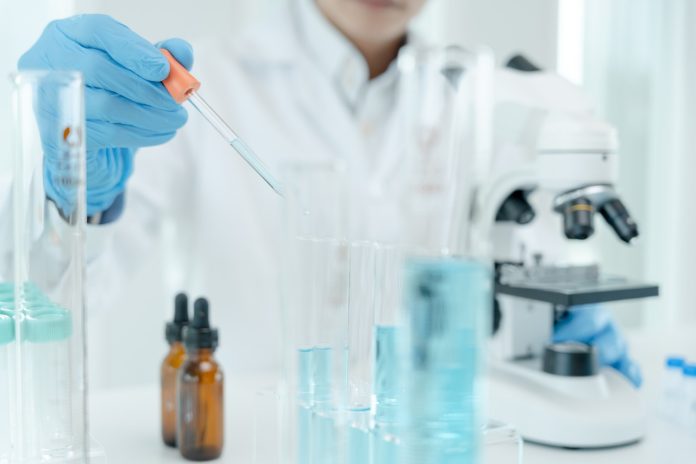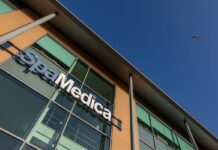Stem cells (SCs) are specialized human cells with self-renewing properties and the potential to differentiate into any human cell and thus repair damaged tissues. These cells are highly efficient in mitigating symptoms, healing, and regenerating any damaged tissue or organ via differentiation. In the meantime, they possess an extraordinary ability to reduce inflammation and modulate the immune system to delay disease progression.
Stem cell therapy is widely used as a regenerative medicine for a number of health conditions.
There appear to be a lot of myths and misconceptions about stem cell research among the general population that we would like to debunk in this article. Let’s uncover some interesting facts about stem cells that you have probably misheard about.
Stem Cells Can Potentially Cure Every Disease
Incorrect; SCs hold a world of potential in curing diseases, but they cannot be considered the “magic cure” for all of them. Most researchers support cell-based therapy as a viable treatment for many autoimmune conditions, chronic inflammations, and several other ailments.
However, stem cell potential is still being researched and their results cannot always be guaranteed for the outcomes of a treatment depends upon many factors like:
- Type of treatment;
- The disease or condition under treatment;
- Stage of the disease.
Moreover, where stem cells are taken from and where they are injected may play a critical role in treatment outcomes and success as well.
What Conditions Are Treatable with Cellular Therapy?
Today, SCs are widely employed in medicine to manage several ailments and disorders, including the ones listed below:
- ALS
- Alzheimer’s & Parkinson’s
- COPD
- Multiple sclerosis
- Heart diseases
- Crohn’s disease
- Autoimmune conditions
- Cerebral palsy
- Kidney and liver diseases
- Lupus
- Neurological conditions
- Reflex sympathetic dystrophy
- Strokes
- Traumatic brain injury
- Sports injuries
- Spinal cord injury
Stem Cells Are Sourced Unethically
One of the major barriers that stem cell treatments have had to overcome over the years has been their unethical sourcing from embryos.
Today, the most common source of SCs is:
- Bone marrow.
- Adipose tissue.
- Umbilical cord tissues.
Neither of these sources can be deemed immoral. Most reputable clinics source stem cells through the American Association of Tissue Bank-certified suppliers. These donated tissues undergo a very strict and regulated checkup for a variety of diseases, including
- STDs
- Hepatitis A/B/C/D
- Tuberculosis
- Zika virus
- HIV
- History of CJD
- HTLV1 & 2
- Drug or alcohol abuse
- Screening for cancer, autoimmune diseases, or other chronic illnesses
After careful screening, Vitro then utilizes its clinical-grade proprietary culture medium to allow these cells to expand into roughly 300 million of them per treatment. None of the above-mentioned procedures for sourcing stem cells can be regarded as unethical.
Umbilical Cord Tissue-Derived Stem Cells Do Not Contain “Live Cells”
Contrary to the popular misbelief that umbilical cord tissues do not contain any lives cells,SCs driven from bone marrow and adipose do.
In reality, umbilical cord tissue contains millions of undifferentiated live cells driven from Wharton’s Jelly (tissue inside the umbilical cord) that have immense healing properties. These stem cells are expanded and grown in a cell media culture to replicate into millions for the procedure of cell-based therapy.
Note that umbilical cord mesenchymal stem cells (UC-MSCs) would not be able to expand if the main tissue from which they are driven, was not alive and active in the first place. Moreover, before these cells are transplanted, they are tested for viability both after expansion and before the treatment, to ensure they are of the highest quality and standard.
Stem Cells Are Unable to Cross the Blood-Brain Barrier
The “blood-brain barrier” refers to the barrier formed by the central nervous system around the brain to ensure that nothing moves in and out of it. This blood-brain barrier is the key to human survival because it:
- Inhibits any pathogen or foreign substance from entering the brain.
- Maintains homeostasis.
- Modulates the immune cells’ transport.
As well, it may prevent drugs from entering the CNS during the treatment of neurodegenerative diseases.
Stem cells, however, are able to cross this blood-brain barrier and successfully reach the targeted inflamed site to initiate repair [doi: 10.1155/2020/8889061]. This indicates SCs are the most promising approach for cellular therapy, especially for treating neurodegenerative diseases.
Furthermore, some of these cells are even smaller than white blood cells, ranging in size from 10 to 15 microns, which facilitates their passage across the barrier.
For years, facts about stem cells’ efficacy have been twisted without evidence but with clinical trials and results, their potential has become evident.
Only the United States Offers the Best Treatment
This is a highly doubtful statement, for there are many international clinics pushing research and clinical trials for stem cell research, cell quality, and advanced therapy protocols. Some of the major clinics around the world are investigating SC potential as regenerative medicine via clinical trials, thus ensuring the same level of treatment and life-changing procedures as the United States.
In order to choose the best place to get stem cell treatment, make sure you choose the one with licensed physicians and injection specialists, credible patient reviews, and detailed case studies.
Furthermore, despite clinical evidence, the United States has strict rules and laws against cell-based treatments, their scope, and the number of cells used. Due to these restrictions, some clinics refer their patients to international clinics in other countries, where laws are much looser. Hence, this claim is mere speculation that only the United States has the best treatment to offer.
In Conclusion
Stem cells are currently the most promising treatment option for several diseases. With the help of cutting-edge research and clinical trials, we expect to see significant progress in our understanding of stem cell facts and therapeutic potential. And you, do you think this method is promising?







